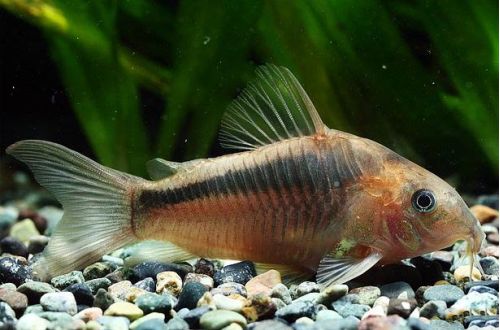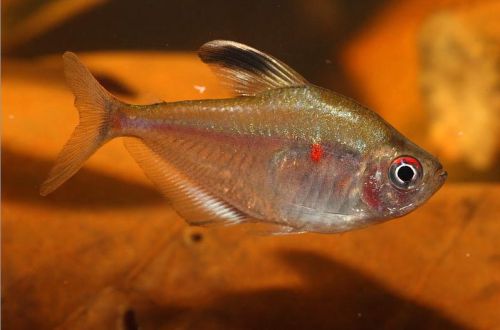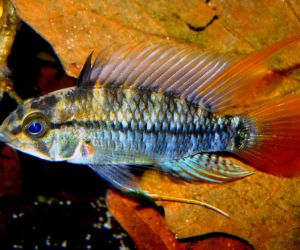
Corydoras zygatus
Corydoras zygatus or catfish Cory zygatus, the scientific name Corydoras zygatus, belongs to the family Callichthyidae (Shell or callicht catfish). The species name comes from the Greek word ζυγόν (zugón), meaning “yoke” – an allusion to the striped body pattern, in which black stripes resemble a harness yoke.
The fish is native to South America. Inhabits the basins of the Maranion and Ucayali rivers. The natural habitat covers the territories of Ecuador and the northern part of Peru. It occurs mainly in shallow tributaries and less often in the main channels of rivers.

Contents
Description
The pattern and coloration of the body resembles its close relative Corydoras Rabo. The differences are minor. Corydoras zygatus is slightly larger, reaching 6–7 cm in length, and the dark stripe on the back, characteristic of both species, does not extend to the base of the tail. Depending on the lighting, orange shades can be added to the silvery color.
Brief information:
- The volume of the aquarium – from 80 liters.
- Temperature – 20-26°C
- Value pH — 5.5–7.5
- Water hardness – soft (2-12 dGH)
- Substrate type – sandy
- Lighting – subdued or moderate
- Brackish water – no
- Water movement – light or moderate
- The size of the fish is 6–7 cm.
- Nutrition – any drowning
- Temperament – peaceful
- Keeping in a small group of 4-6 individuals
Maintenance and care
Like many other catfish, Cory is considered a good choice for beginner aquarists. It is easy to maintain due to its unpretentiousness and ability to adapt to various external conditions, provided that changes occur slowly. For example, a fish can live both in soft slightly acidic and slightly alkaline hard water, but it is impossible to directly move it from one environment to another without acclimatization. Hydrochemical values should change smoothly.
Maintaining the biological balance in the aquarium depends on the uninterrupted operation of the installed equipment, the weekly replacement of part of the water with fresh water and the timely removal of organic waste (food leftovers, excrement), etc.
The optimal tank sizes for a group of 4-6 fish start at 80 liters. Arbitrary in design. The main thing to pay attention to is the presence of soft clean soil and several shelters made of snags, thickets of plants or any other natural or artificial decor.
Food. Will accept most of the popular foods in the aquarium trade in dry, freeze-dried, frozen and live form. A varied diet from a combination of several products is welcome.
behavior and compatibility. Peaceful friendly fish. Prefers to be in the company of relatives. It is recommended to purchase a group of 4 individuals. Calm disposition and ability to adapt to various conditions makes this catfish an excellent neighbor for many other species of fish.





